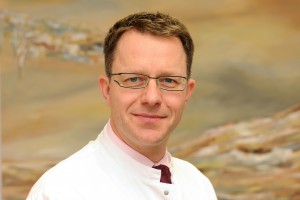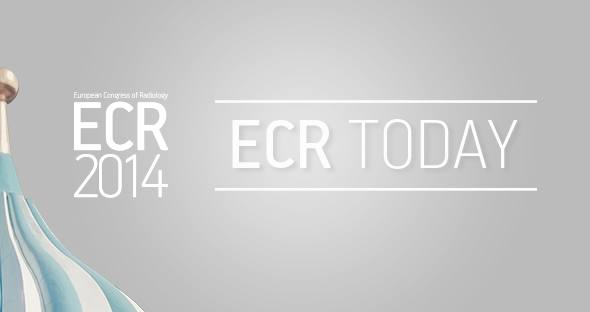ESR initiatives to strengthen the visibility and role of imaging in personalised medicine
An interview with Prof. Hans-Ulrich Kauczor, Heidelberg/DE, ESR Research Committee Chair
ECR Today: What are the Research Committee’s objectives?
Hans-Ulrich Kauczor: Our main tasks are to periodically survey the needs of the research community, as well as develop recommendations for radiologists to engage with different fields of research and innovation. We also work to assess the current status and develop recommendations on how to improve education in research and to provide strategic recommendations for the research field to the executive council. Last but not least, we aim to leverage cooperation between research disciplines and foster networking and liaising with scientific biomedical European societies.

Hans-Ulrich Kauczor is professor and chairman of radiology at the University of Heidelberg and director of diagnostic and interventional radiology at University Hospital Heidelberg in Germany. He chairs the ESR’s Research Committee.
ECRT: Why is it important to have a dedicated ESR subcommittee for imaging biomarkers?
HUK: The Subcommittee on Imaging Biomarkers was established to address the issues concerning the future development of image-derived quantitative biomarkers, its assessment, validation and standardisation.
The development of imaging biomarkers has become an integral part of modern medicine with a huge potential to advance the development of personalised medicine. Different types of imaging biomarkers (anatomical, functional, and molecular) are used for the detection and treatment of major diseases including cancer, cardiovascular diseases, neurological and psychiatric diseases, musculoskeletal disorders, metabolic diseases, as well as inflammatory and autoimmunity based diseases. In contrast to other biomarkers, imaging biomarkers have the advantage of remaining non-invasive. They are also spatially and temporally resolved, non-destructive and repeatable over a long period, and have the potential for broad application. But before imaging biomarkers can be widely adopted, measures for standardisation and quality assurance must be implemented.
ECRT: Can you please tell us more about your collaboration with QIBA and the Imaging Group of the EORTC? How important is it to work closely with these organisations?
HUK: The collaboration with the European Organisation for Research and Treatment of Cancer (EORTC) and its Imaging Group, as well as the Quantitative Imaging Biomarkers Alliance (QIBA) is extremely relevant.
Medical imaging, in particular radiology, has not, until now, played an important role within the EORTC. The whole concept of having standardised, quality-controlled quantitative imaging biomarkers, which might be used as surrogate endpoints, has not been implemented within the framework of the EORTC. The EORTC imaging group provides a great opportunity to achieve this and introduce standardised quality-controlled imaging and imaging biomarkers into international trials by radiologists. Among other topics, the implementation of data protection rules, such as the anonymisation of image data transferred from study sites to the EORTC, and the absence of a budget for local reviewers, as well as the imaging group, are among the main concerns of this group.
The Quantitative Imaging Biomarkers Alliance was founded by the RSNA in order to advance quantitative imaging and the use of imaging biomarkers in clinical trials and clinical practice, by engaging researchers, healthcare professionals and the industry. Daniel C. Sullivan, QIBA Chair, and the RSNA have expressed their interest in working together closely with the ESR on the stepwise development of imaging biomarkers. A memorandum of understanding between the ESR and the RSNA has been signed, among other things, in order to better integrate the relevant US and European activities, e.g. for the development and introduction of the Uniform Protocol for Imaging in Clinical Trials (UPICT) Protocol developed by QIBA.
ECRT: Why was the ESR Working Group on Personalised Medicine founded?
HUK: The WG Personalised Medicine (PM) was established to develop a strategy to outline the crucial role medical imaging plays in the field of PM and improve awareness among radiologists, policy makers and patients. Personalised medicine (PM) is increasingly becoming a hot topic in all areas related to biomedical research and has the potential to become the paradigm for clinical practice.
The future of medicine lies in early diagnosis and individually tailored treatments, a concept that has been designated ‘personalised medicine’, i.e. delivering the right treatment to the right patient at the right time. However, the value of medical imaging in PM is frequently underestimated, as many policy makers forget the all-important right location in the PM paradigm. Medical imaging has always been personalised as it provides individual assessment of the location and extent of an abnormality, and in the future it will prove fundamental to almost all aspects of PM. It is very important that imaging is duly represented in personalised medicine in order to inform radiologists, patients and policy makers of the crucial role played by medical imaging in PM.
ECRT: What did the working group set out to achieve?
HUK: The working group is planning to develop a general ESR policy on personalised medicine, and publish an opinion paper on radiology in personalised medicine and on the role of radiology in linking imaging databases, biobanks and other knowledge repositories, including population-based imaging. Another goal for the working group is to identify hot topics for the ESR in the field of PM, develop a strategy to make radiology and the ESR a key player in the field of radiogenomics and systems medical imaging. Finally, the working group is committed to offering input and advice in the field of PM to the ESR as a stakeholder in EAPM, EPMA, and COCIR.
ECRT: Why was the ESR Working Group on Research in Education and Training founded?
HUK: Research is the future of radiology as it provides visibility in the academic community, attracts good residents, and industry and research funds. Research is the basis of the development of improved imaging methods, and it provides data for discussions in turf battles and healthcare financing. The working group was founded to address the current situation. Many European radiologists are active in research only after their radiology board examinations while dedicating all efforts towards clinical work during residency. Compared to other researchers, clinicians tend to be older before receiving academic promotions. Academic institutions tend to lose bright radiologists to better paid private practice soon after board examinations, further shortening the academic life of a radiologist. There is an increasing pressure to separate research from healthcare delivery. The working group works to assess the current status and develop recommendations on how to improve education in research.
ECRT: What did it set out to achieve?
HUK: The working group is planning to develop a general strategy for the ESR on the implementation of research in education and training. The publication of an opinion paper on research in education and training, and the establishment of MD/PhD programmes in radiology are also on the agenda. The tasks of the working group are also to regularly update the European Training Curriculum with research results, provide input and advice to ESOR and the ECR Programme Planning Committee (PPC) in order to have research issues adequately represented, and contribute to the e-learning programme of the ESR.
ECRT: Do you think there is enough importance (discussions, education, financial resources, time, etc.) put on research in imaging in Europe nowadays? What would be your suggestions to improve the situation?
HUK: Clinical workload, shortage of academic radiologists, training of young radiologists and financial resources for basic research are the important issues imaging research is facing today. These challenges are difficult to overcome, and not enough importance is put on these issues to ensure the future of radiology for radiologists. To improve the situation, it is vital to raise awareness and change the academic mindset on research carried out by radiologists in radiology, as well as in the arenas of clinical service and private practice.
Different issues must be addressed at the same time to improve the situation e.g. appropriate infrastructure, funding, time dedicated to research, general research training for residents, research fellowships and mentoring programmes.
Moreover, visionary leadership that understands and communicates research efforts and a culture that respects and rewards research and
researchers are important prerequisites for the success of research.


